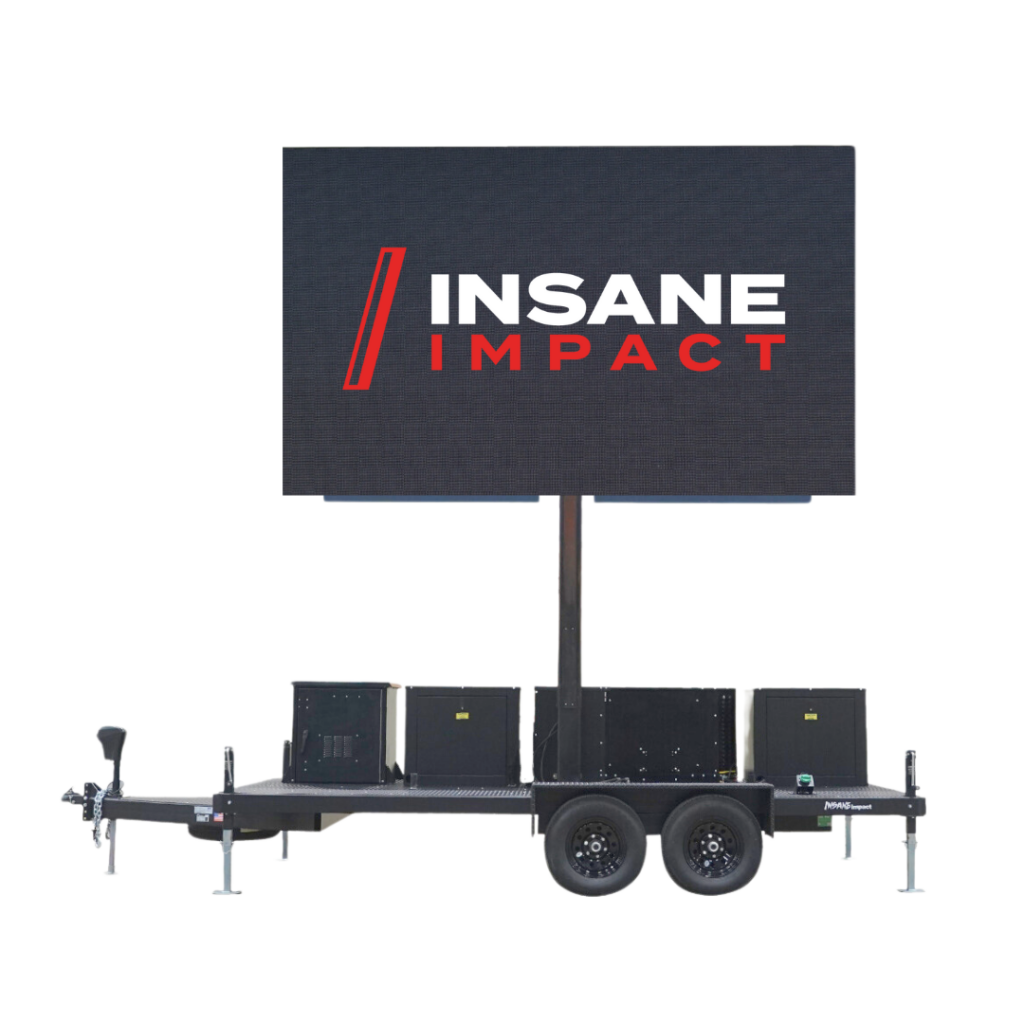16:9 Ratio Defined
A 16:9 ratio (pronounced “16 9”, “16 to 9” , or “16 by 9” and sometimes written as “16×9”) is an aspect ratio, where for every 16 units of width, there are 9 corresponding units of height. Examples of 16:9 ratios are 16 inches wide by 9 inches high, 32 widgets wide by 18 widgets high, and 1920 pixels wide by 1080 pixels high. An image has a 16:9 ratio if its width-to-height ratio is equal to 16/9, or 1.78. A 16:9 ratio can also be represented as 1.78:1.

16:9 is significant because it is today’s standard ratio for film and display. They’re the standard ratio for TV’s, LED display trailers, mobile devices, and more.
The 16:9 ratio replaced the old 4:3 ratio in the early 2,000s. You may have heard terms such as 1080p HD, 720p HD, and 4K UHD. These terms all refer to 16×9 ratios. For example, a 1080p HD display refers to a screen resolution of 1920x1080p (1920/1080 = 1.78).
16:9 Ratio Examples
COMMON 16:9 RATIOS
- 1024×576
- 1152×648
- 1280×720 (HD)
- 1366×768
- 1600×900
- 1920×1080 (full HD)
- 2560×1440
- 3840×2160 (4K UHD)
- 7,680 x 4,320 (8K UHD)
Calculating 16:9 Aspect Ratios
FORMULA
W/H = 1.778
If the width divided by the height equals 1.778, then the aspect ratio is 16:9 (1.78:1).
If you know the width of an object but not the height, then you can find the 16:9 height by dividing width by 1.778.
EXAMPLE
Ben has a video wall that is 32 panels wide. How many panels high does he need to build for a 16:9 display?
W/H = 1.778
32/H=1.778
32/1.778 = 18
Ben needs his video wall to be 18 panels tall.
If you know the height of your object but not the width, then you can find the 16:9 width by multiplying the height by 1.778.
EXAMPLE
Kathy needs to design an image into a 16:9 ratio for a social post. Her height is 720 pixels. How wide does her image need to be?
W/H = 1.778
W/720=1.778
720*1.778= 1,280
Kathy needs here image to be 1,280 pixels wide.
Too much math? You can also use this aspect ratio calculator.
16:9 Ratios and Video Walls
In many cases, video walls will be built into the 16:9 format to allow for seamless display of 16:9 content.
LED PANEL COUNT AND 16:9 RATIOS
Square (1:1) LED panels may pose a challenge when creating true 16:9 video walls, because the only way to achieve an exact 16:9 ratio is to have 16 panels wide by 9 panels tall, or an exact multiple of such. Luckily, there is some wiggle room with 16:9 ratios. You want your video wall to be close to a 16:9 ratio and the 16:9 content will automatically stretch to fit the display. Display quality can be affected by pixel pitch as well.
Square Video Wall Panel Count 16:9 Formula:
Panel Width / Panel Height = Between 1.65 and 1.85
Your panel count width divided by your panel count height should equal in between 1.65 and 1.85. This is your “16:9 safe zone”. Here are video wall sizes within the 16:9 safe zone:
The above sizing configurations will be close enough to a 16:9 ratio to be undetectable to the naked eye. As you can see, the only exact way to achieve a 16:9 with square panels is with 16 panels wide by 9 panels high. In contrast to 1:1 square panels, there are also individual panels that are 16:9 already, such as with LCD video walls. In this case, a panel count of 1:1 actually equals 16:9 total ratio, since the screens are scaling up from 16:9. So 2×2, 5×5, 10×10 walls created with 16:9 panels all equal 16:9 ratios.
16:9 Content on Non-16:9 Screens
Maybe your advertiser sent video wall content in the wrong ratio last minute. Or say you just want to display 16:9 content onto a custom-ratio screen. What happens if you try to display 16:9 content onto a video wall that is a different resolution? While it can be done, the end result is not ideal. The result becomes worse with the farther the mismatch between ratios is. There are three options for scaling 16:9 content onto a non-16:9 video wall:
- Stretch to fill – This takes the image and forces it to stretch onto the screen’s ratio. For example, if you upload a 16:9 video onto a 3:1 video wall, this will result in 64% distortion. The image will be stretched width-ways. It is an acceptable option at 10% or less distortion. Shapes such as circles can be less forgiving with noticeable levels of image distortion.
- Letterbox – This fits the content into video wall frame proportionally, leaving black bars either vertically or horizontally. A perfect example of this is when you watch an old movie on a new TV. There are black bars on either side because the film was shot in 4:3, while your TV is 16:9. This is most professional option since it displays the original picture exactly as it was intended by the videographer or designer.
- Crop to fill – This one is not recommended in most cases because it involves cutting off parts of the image. This is especially problematic if there is important text or picture contained in the margins of the image. But an advantage is that it allows you to fill the screen and constrain the aspect ratio. It can also be an effective option with content such as visuals since visuals don’t contain text that could be cropped out.
How to Measure Aspect Ratio
Aspect ratio can be easily measured or calculated in a few different ways. To begin, it can be measured in any unit (pixels, inches, feet) and will require the width of the screen to be divided by the height of the screen. In practical applications, this could be done with a number of physical measurement tools, but also on computers can be measured with a Chrome tool called page ruler.
Aspect ratio, once measured, can be calculated by simplifying the division, or by using an aspect ratio calculator.
Aspect Ratio on TV
Nearly all channels in European, American, African, Asian, and other countries have their default TV resolution at 16:9. It is by far the standard screen size when viewing and distributing Television broadcasts. Wikipedia has a great resource displaying all countries along with the default aspect ratio that their Television distributions use.
Conclusion
16:9 ratios are an aspect ratio containing 16 units of width for every 9 units of height. They can be calculated by ensuring that width divided by height equals 1.78.
16:9 ratios are important to understand when selecting a video wall size or designing content for video walls.
Have additional questions about 16:9 ratios or looking for a video wall solution? Send us a note.






